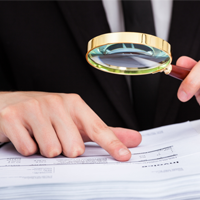How to Perform a Background Check

There are various reasons why background checking of certain individuals or companies has become necessary. The reason may be as simple as a verification of the credentials of a newly appointed executive in the office. It may be as complicated as digging out the criminal past of a dishonest businessman. A background check helps in affirming the credibility of certain person or confirms the certainty of some rumors relating to the performance of certain business house. Thus when you are looking for the source of information for your investigation, you should be guided by the context and circumstances of the investigation, and not by convenience or cost factors.
Background check is a form of investigative research and there is a wide range of databases to help you find the necessary information. There are a variety of databases such as specialized databases, and regional and government databases that may be helpful in searching for different types of personal as well as public information. Then there are several research agencies that will supply you with the necessary information for a price. The most renowned among them are LexisNexis, Westlaw, ChoicePoint Online, AutoTrackXP and Accurint, which specialize, in various kinds of public records. For example, if you are tracking the address of a person over the past several years, Accurint will be able to provide you the most comprehensive information about address histories. But if you want to look up some incident in the recent past, then try AutoTrackXP’s database.
In a democratic country such as the United States, the public theoretically has the right to access the government records that may seem relevant to their business. However there are restrictions on how you are allowed to use this information. The investigators who perform the background checks, therefore are required to be familiar with the various laws governing the accessibility to various public information and their permissible uses. The provisions dealing with the permissible uses of different information change with each state. However, most of the laws generally allow access to the information intended to be used for litigation-related purposes.
Up to this point so far, you have identified the context of the research, and you have identified the possible sources of information and the permissible uses of those sources. The next step involves obtaining personal identification information including name, date of birth and Social Security number. Your client may have already provided this information; even so it is your responsibility to verify them. You should also investigate the places where the person had lived and done business previously.
After you have obtained and verified the personal identification of the person in question, you can now proceed to other aspects of the investigation. For example, if you are checking the credentials of an executive, you should then look into his educational background and past employment history. Or if you are verifying rumors about the shady past of a certain person, you should start by checking for any criminal record.



